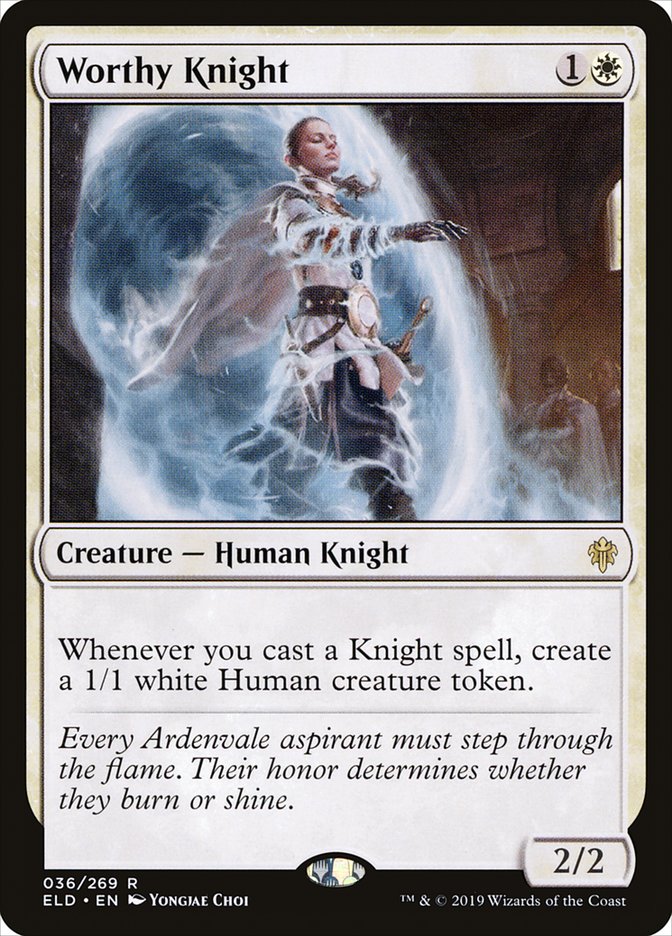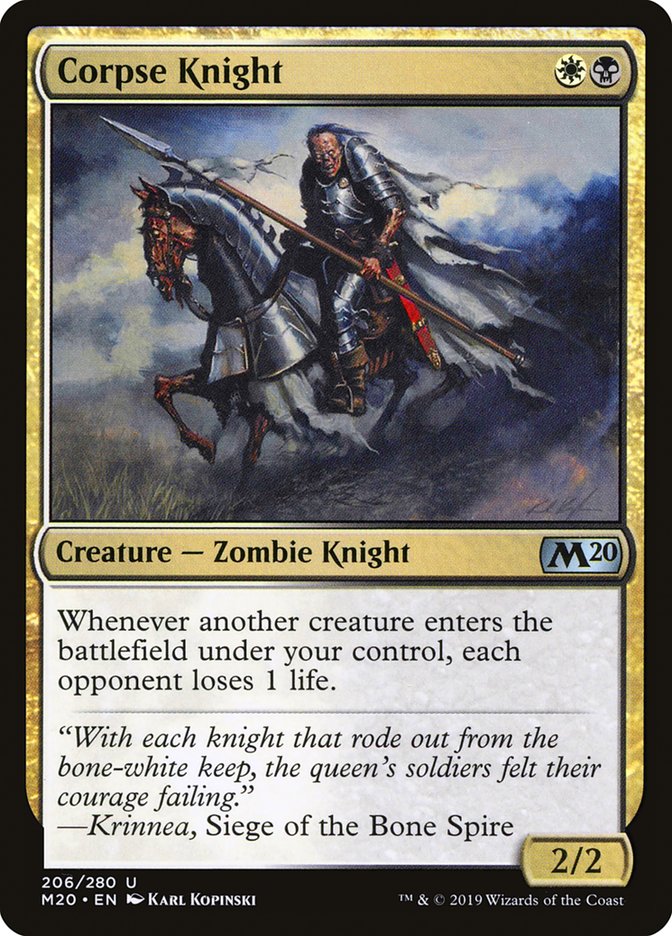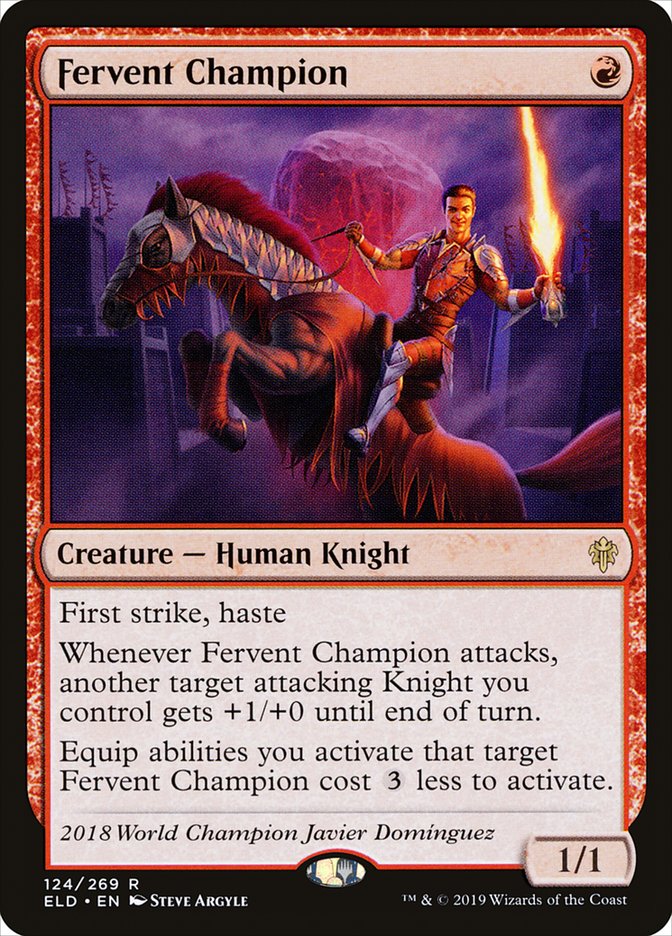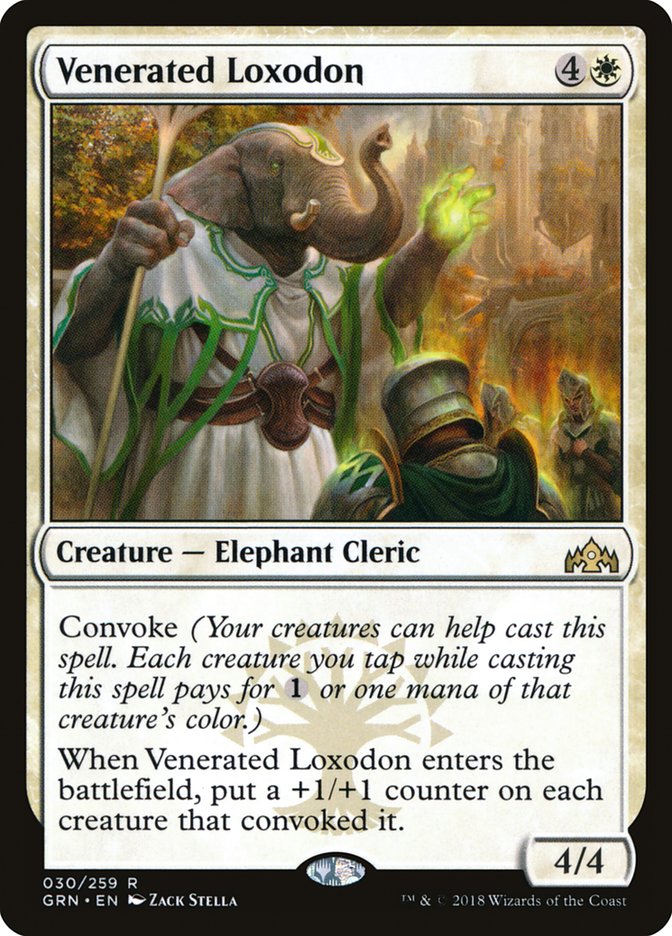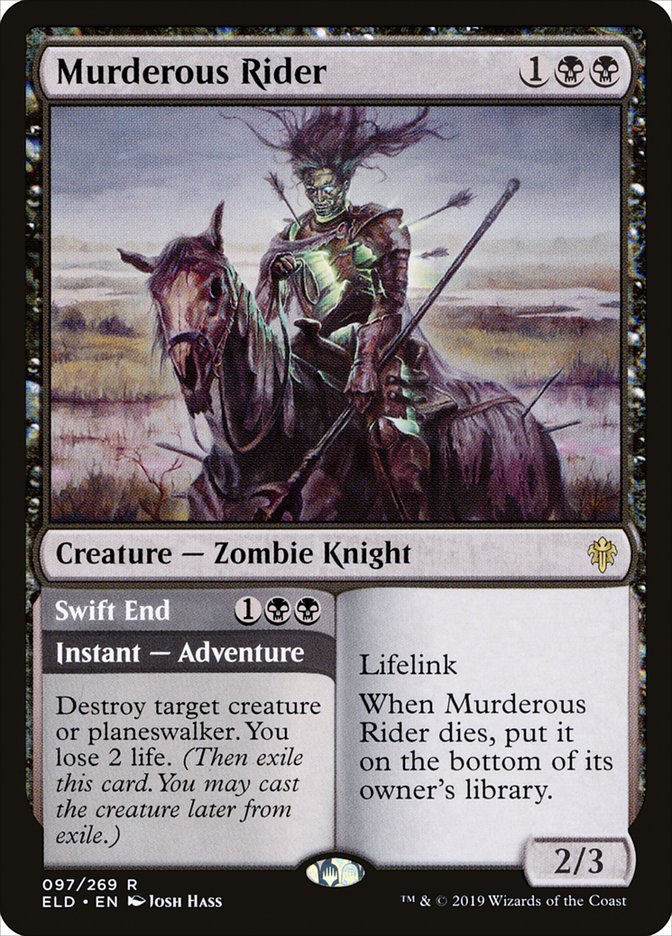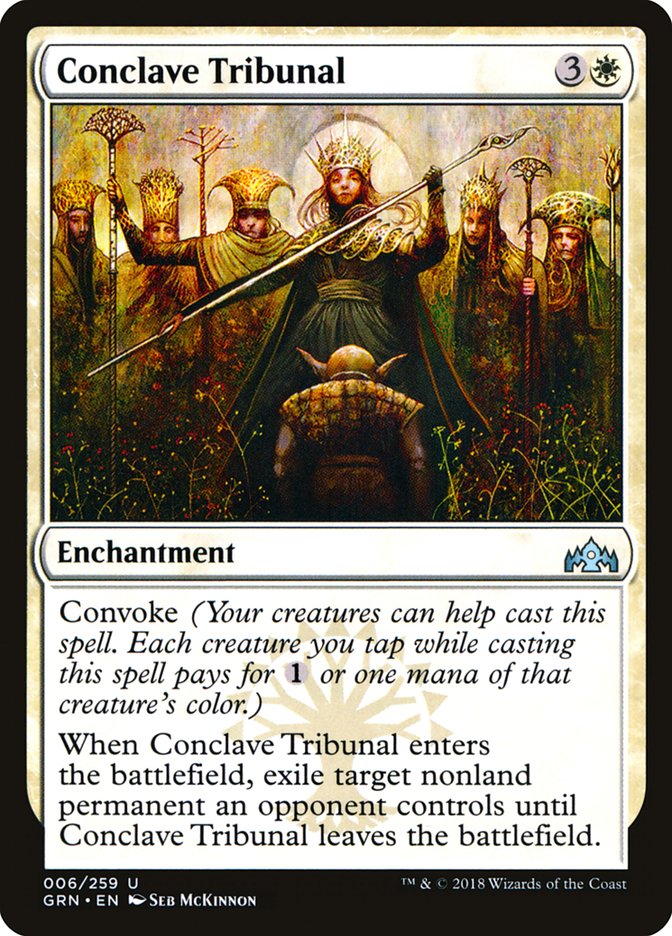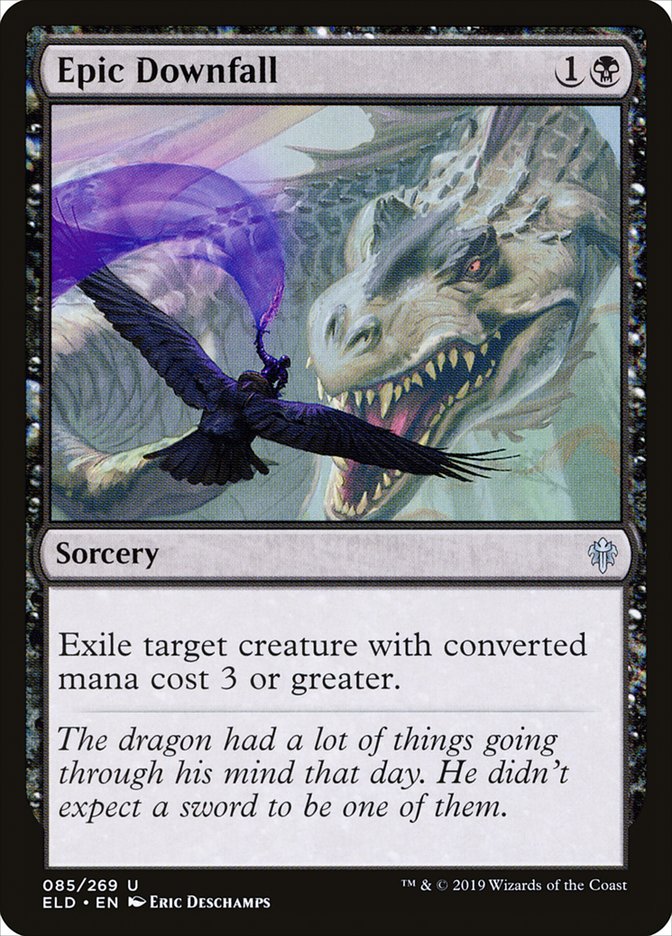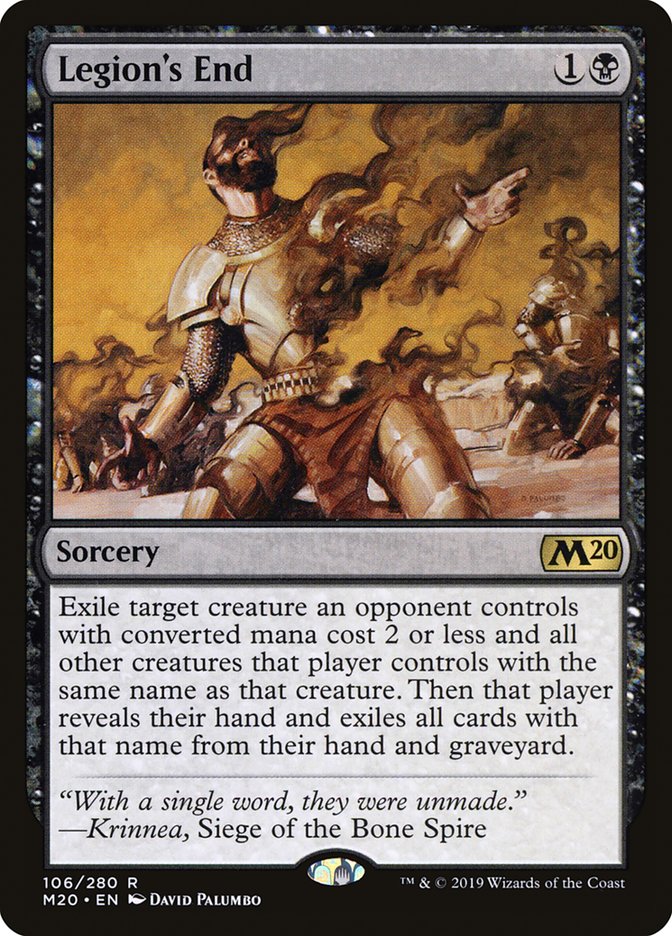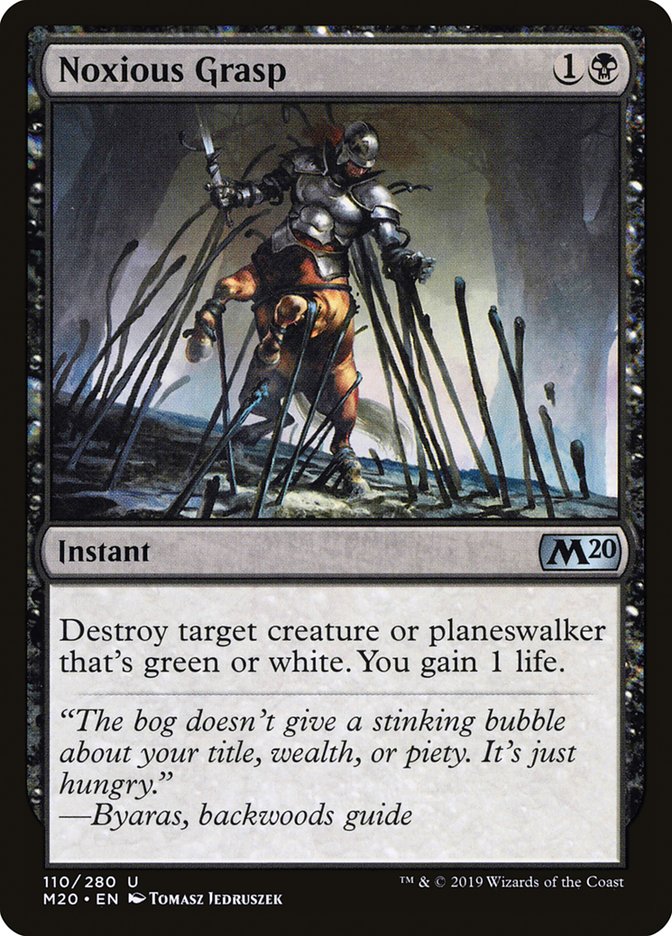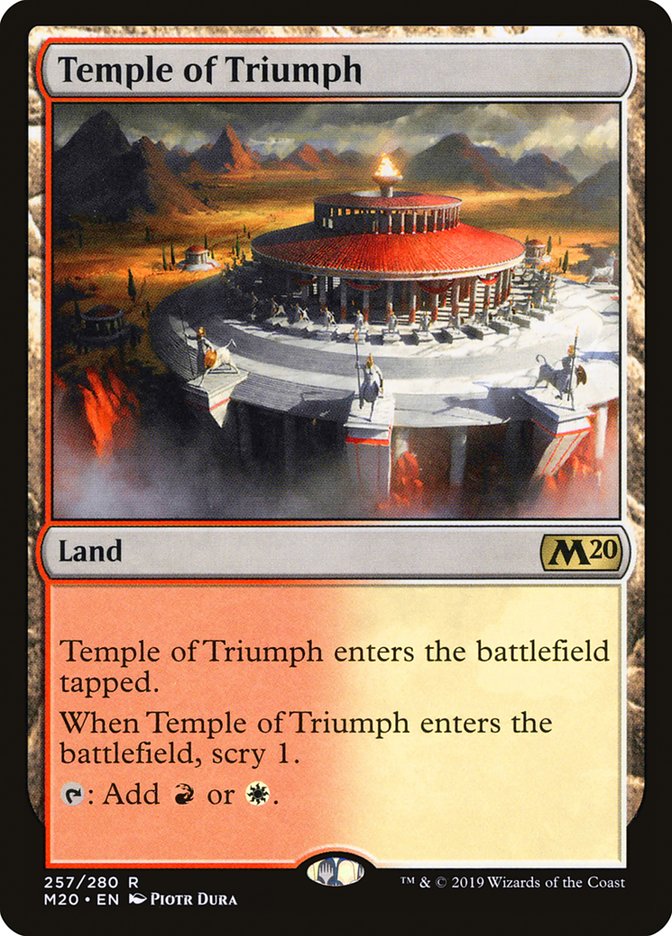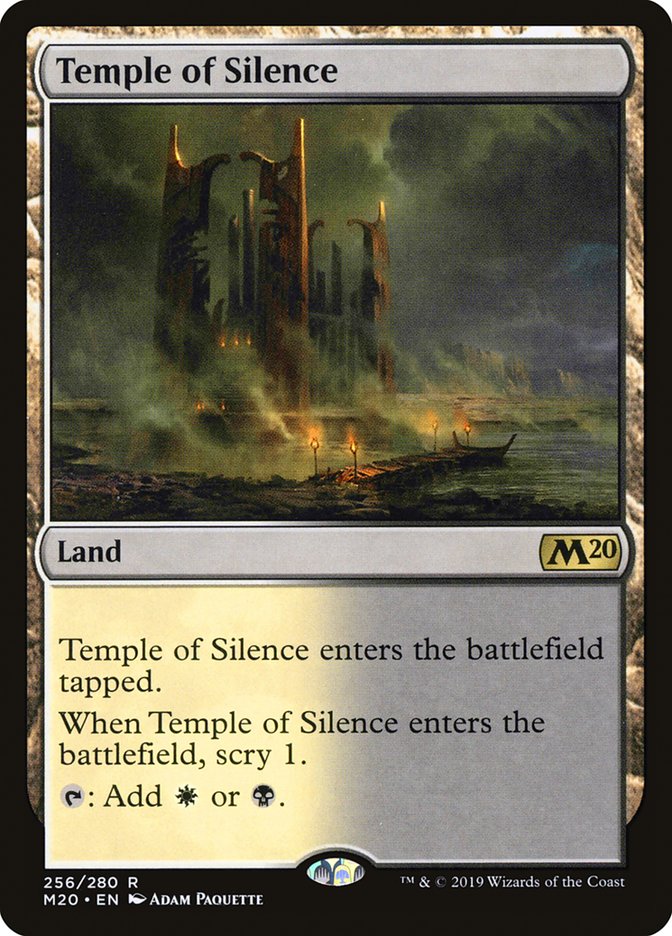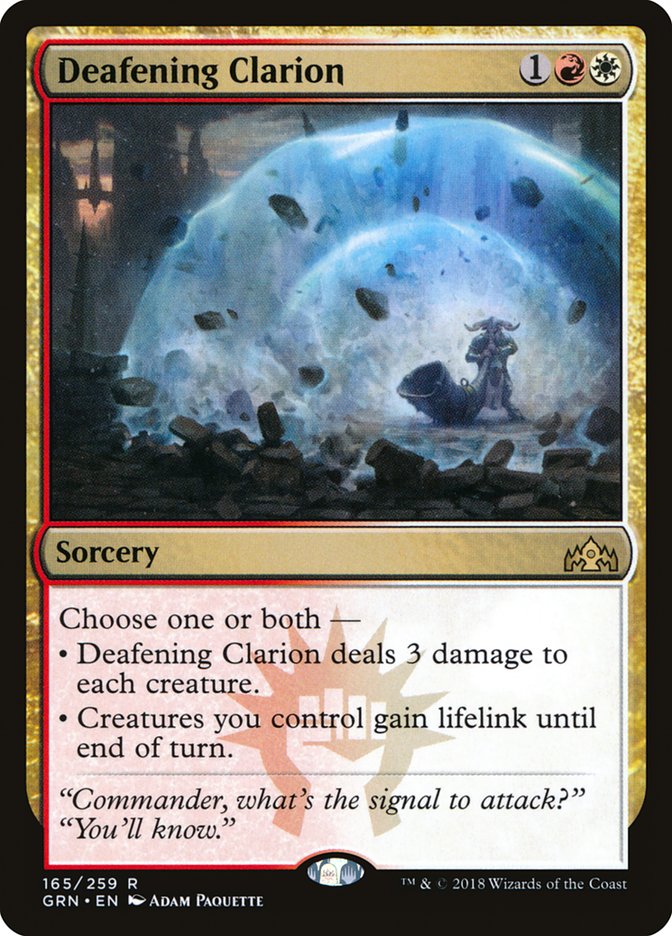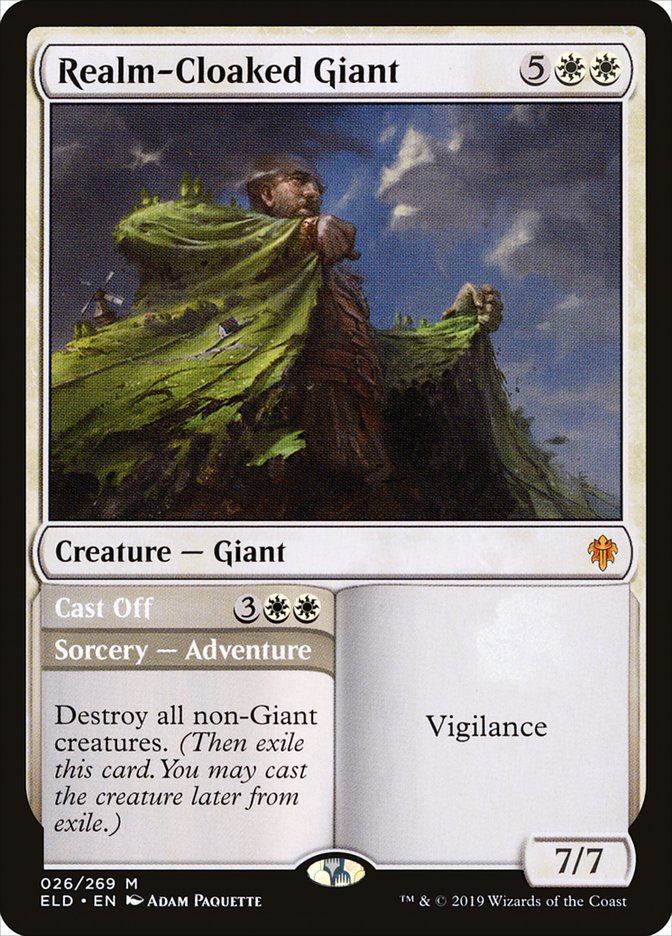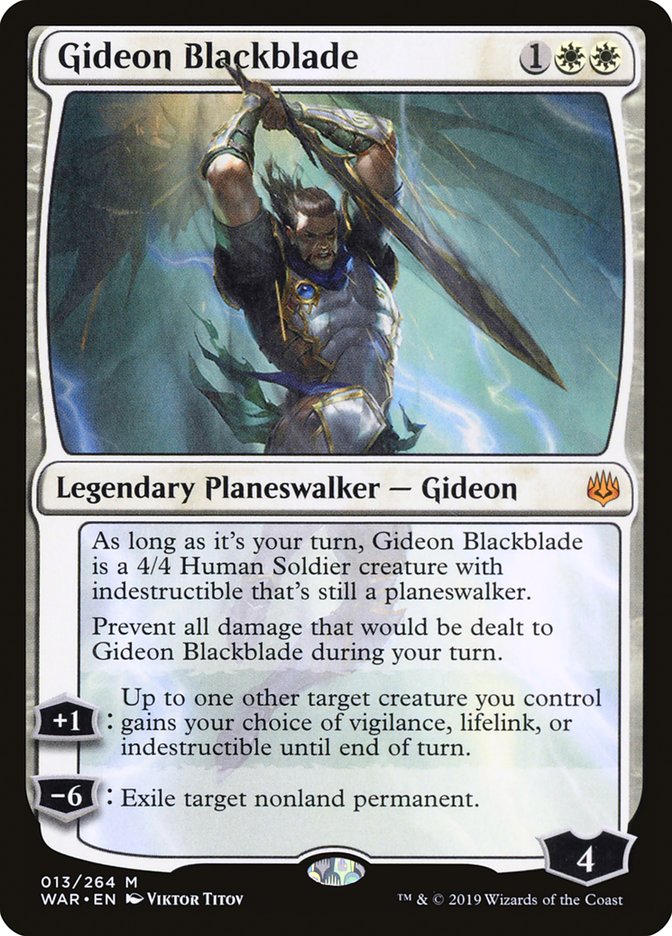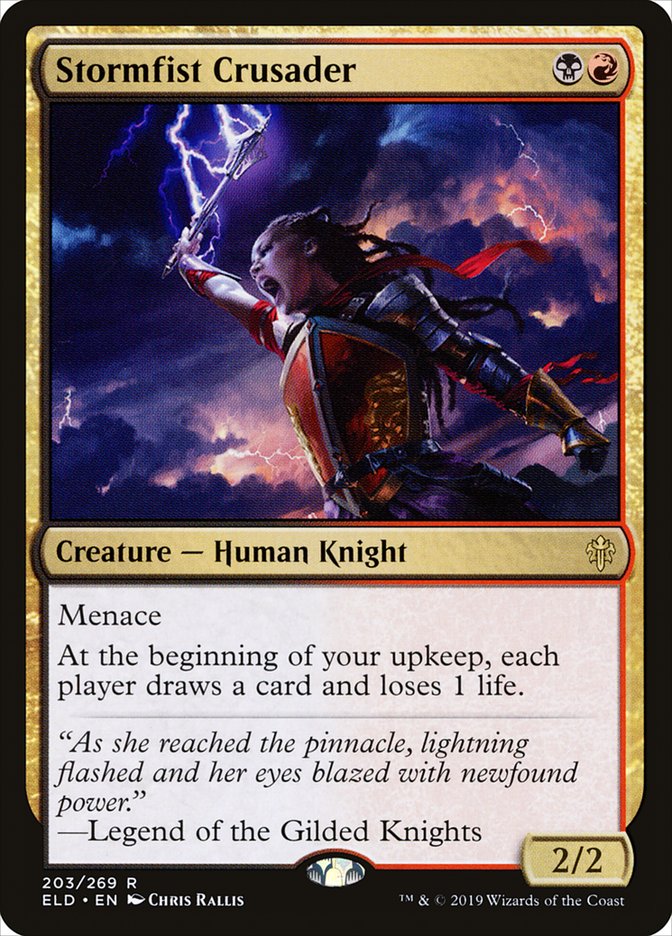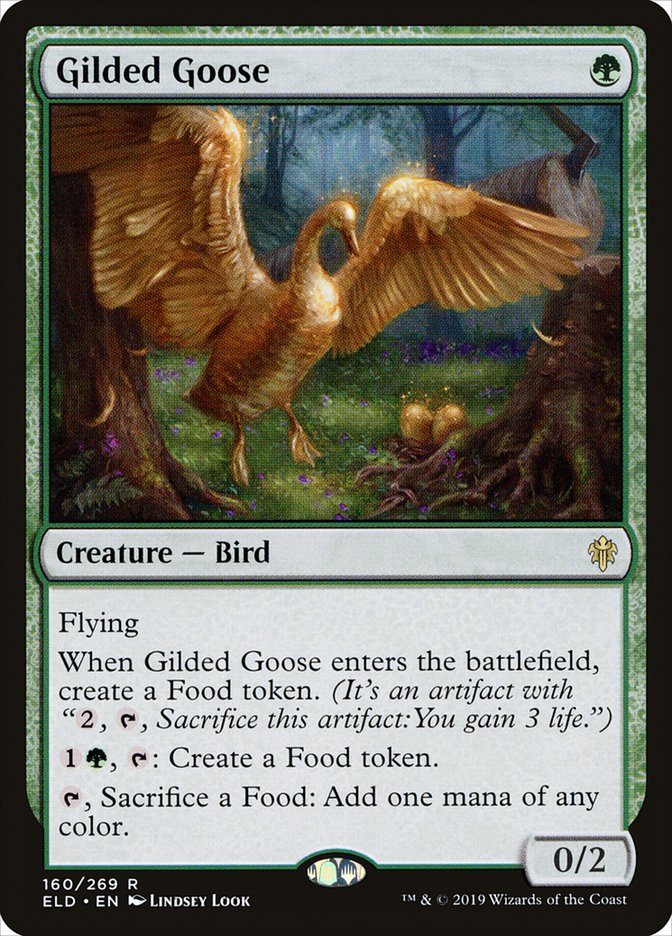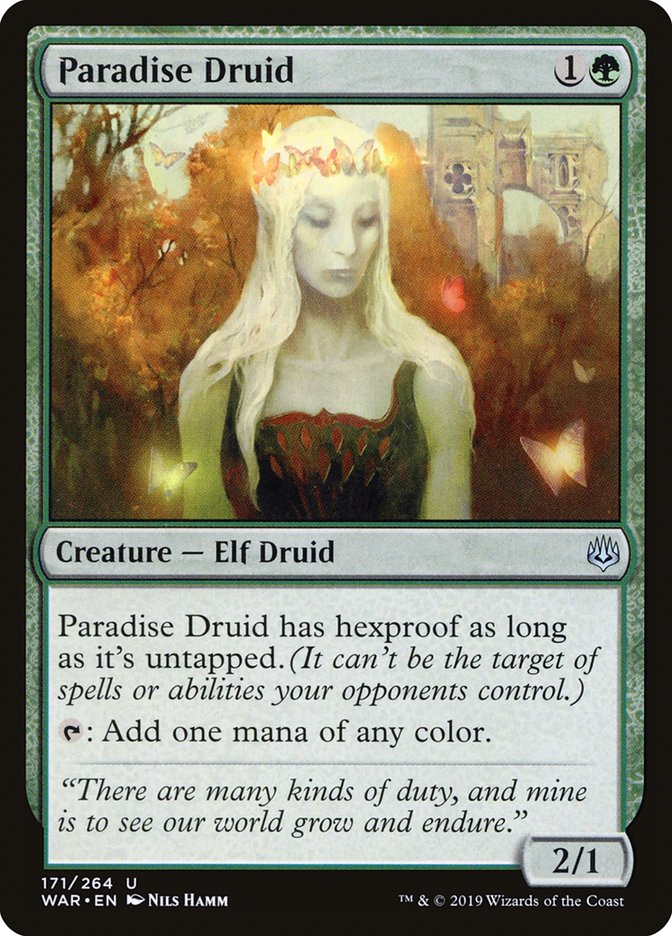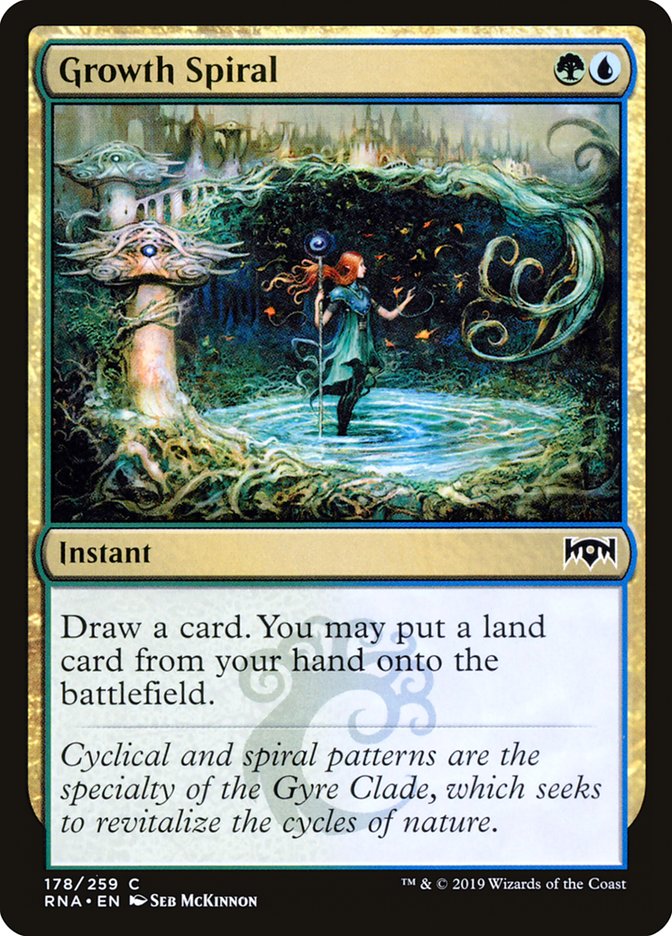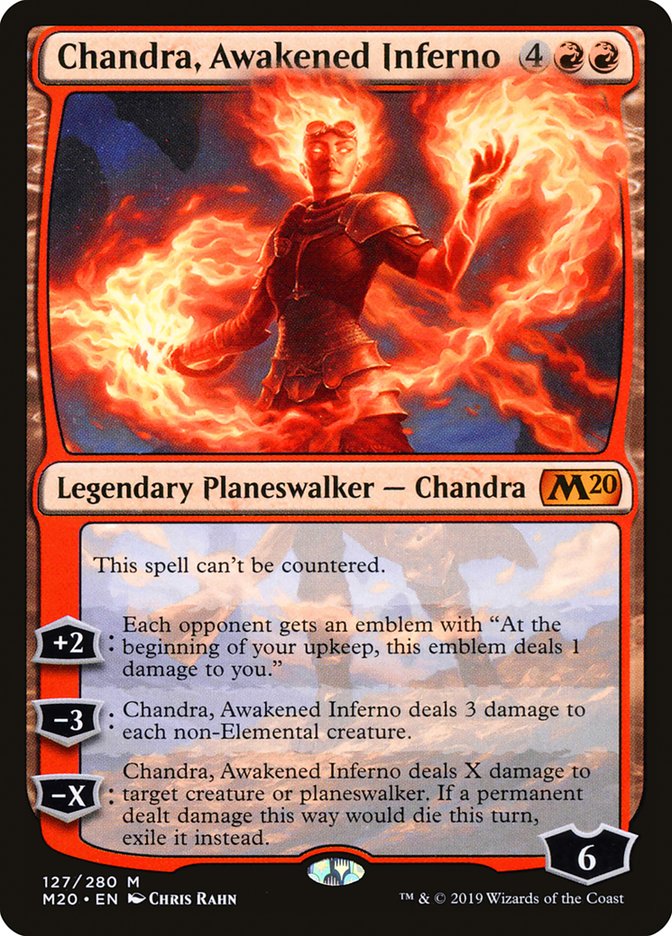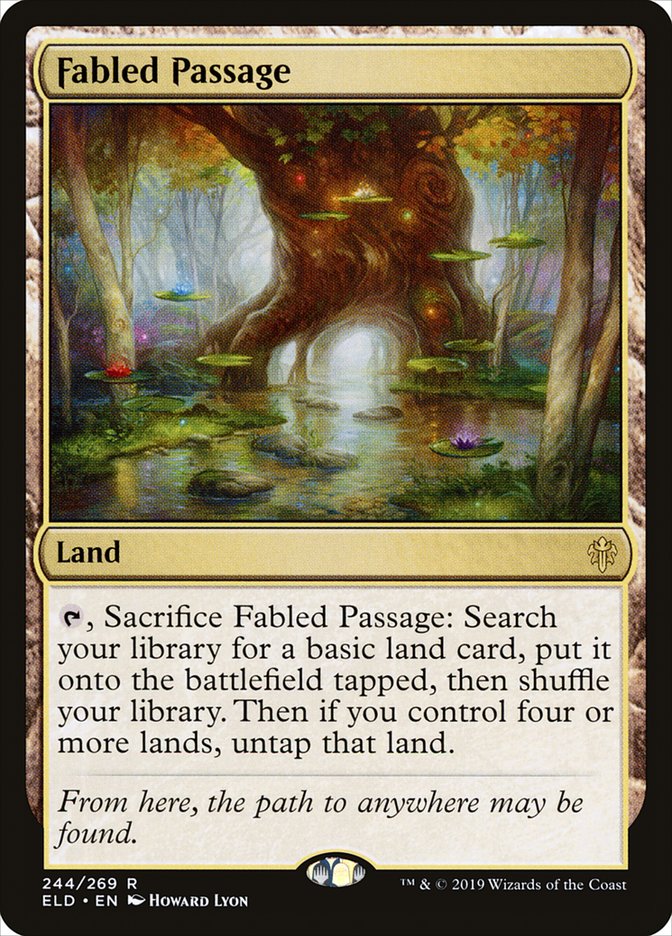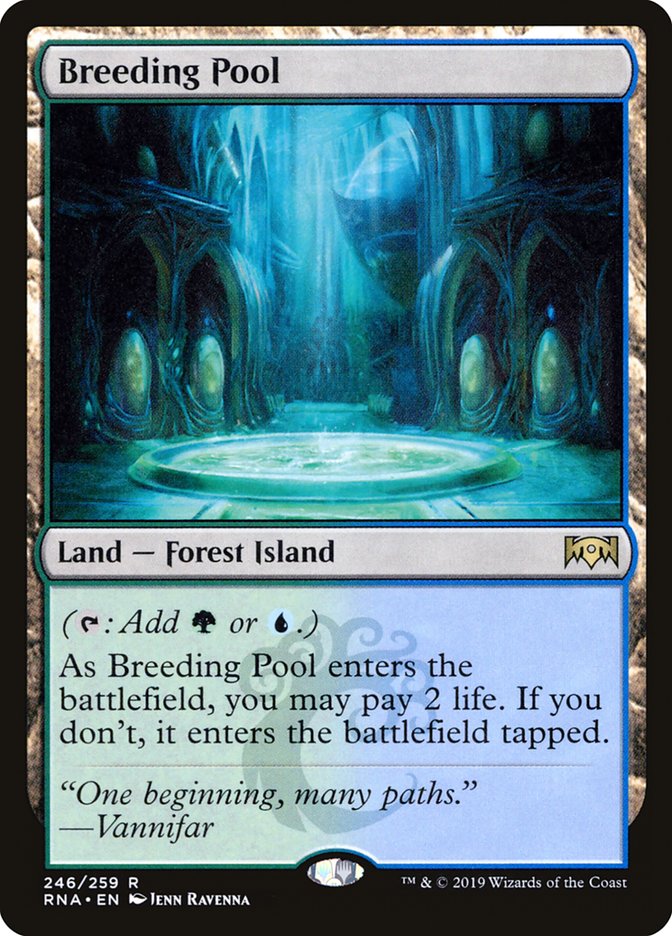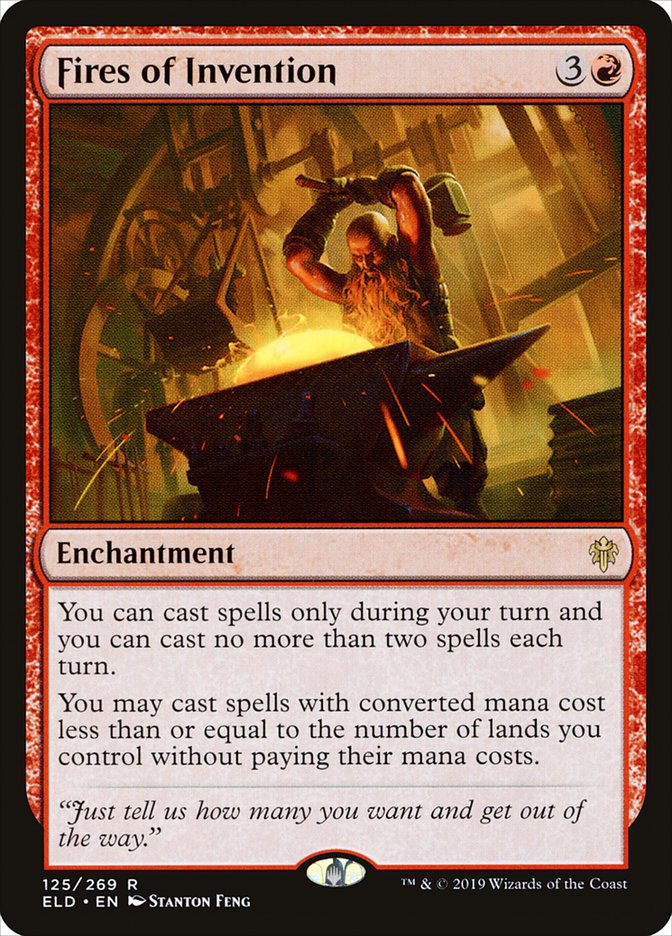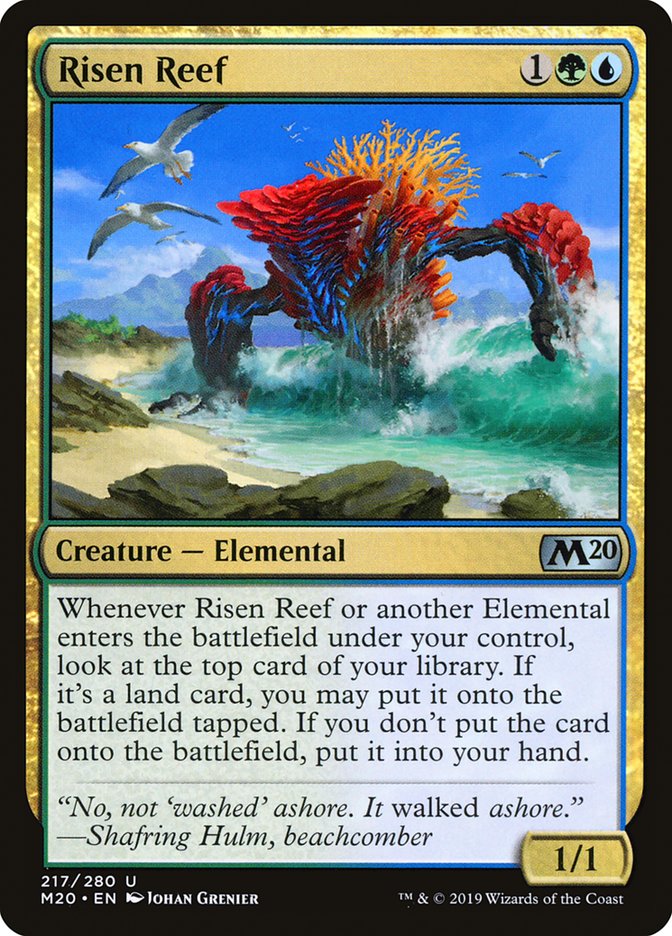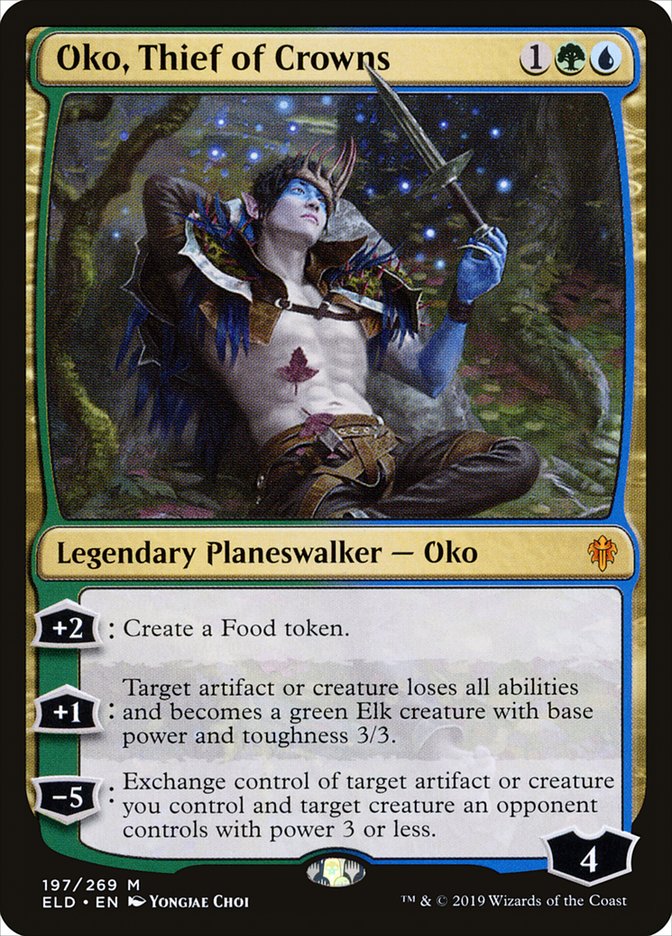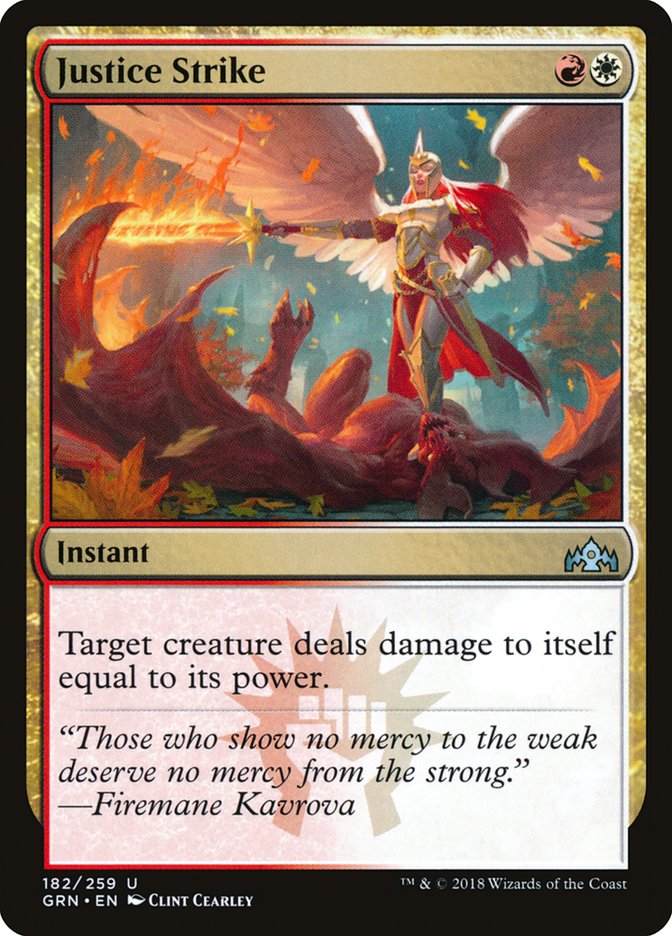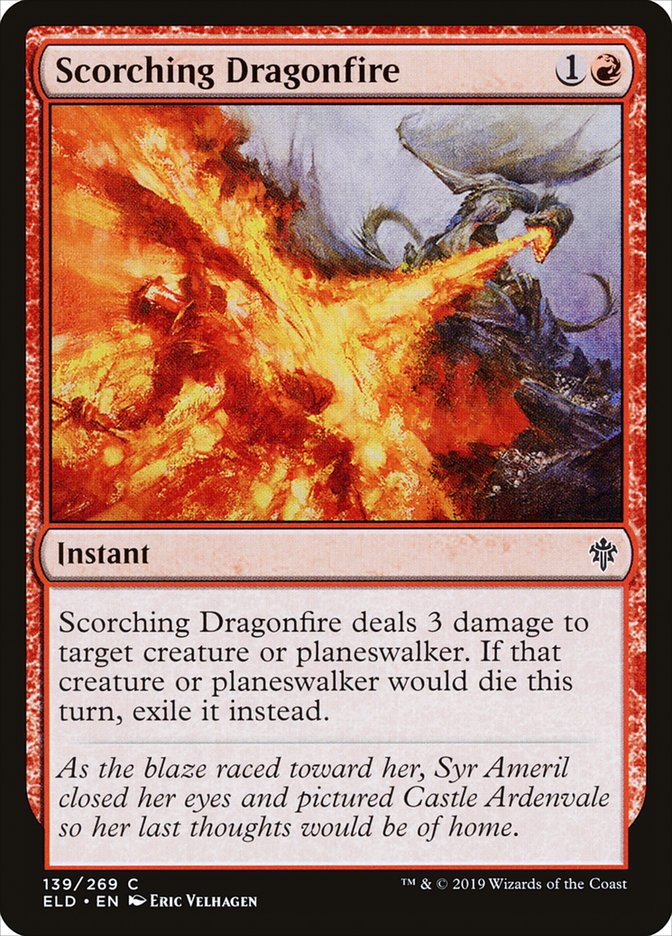Early Standard before any event results is a wild place. There are a million good ideas, and a million still unrefined executions.
Here are my two idea drops and partial refinements in that bucket: Mardu Knights and Fires of Invention.
Mardu Knights
While my results have been more tempered against the tuned lists that have surfaced over the past few days, Mardu Knights felt borderline unstoppable during the Early Access event on Magic Arena.
Creatures (34)
- 4 Venerated Loxodon
- 4 Corpse Knight
- 4 Knight of the Ebon Legion
- 2 Smitten Swordmaster
- 4 Inspiring Veteran
- 4 Venerable Knight
- 4 Worthy Knight
- 4 Fervent Champion
- 4 Stormfist Crusader
Lands (22)
Spells (4)

What’s Good:
Mardu Knights is a go-wide aggro deck. Its strengths are high-impact one-drops and a ton of two-drops that act as ways to magnify them, whereas “stock Mono-White Aggro” is strong because magnifying payoffs are so good.
The core engine is honestly burning your opponent out with Corpse Knight triggers thanks to Worthy Knight. You easily win stalled games thanks to this duo, making good early blockers like Vantress Gargoyle significantly less relevant than expected. The typical pattern is you get a few damage with early attacks, set up a multiple-point ping per Knight cast, and close everything out with one oversized attack with throwaway Human tokens.
This ends up creating an extremely powerful and resilient deck with a similar power, tempo, and incremental growth spread to Modern Humans. If your opponent tries to brick your early aggression with bigger bodies, you go over the top with this engine. If your opponent tries to use their removal to disrupt this engine, they still have to handle the aggressive half of this deck that undercuts the general tempo of the format’s answers.
This deck barely touches red, but it is very much worth it. Inspiring Veteran is fine and on-theme, but Fervent Champion is a game-changer on multiple levels.
The obvious level is just the rate. You will always have another Knight to target. Fervent Champion is effectively a hasted two-power attacker for one mana. I’m not passing up a no-drawback Goblin Guide and the next-best Orzhov one-drop isn’t close.
The next level is curve math. Your cards all pay you a ton for each Knight spell you cast, so obviously you want to play more spells if possible. Since you have so many two-drop payoffs, your ideal curve hits a one-drop and a two-drop on Turn 3 as opposed to a single three-drop like Acclaimed Contender. With Fervent Champion pushing you to twelve one-drops, that optimal curve is way more likely.
The mana for the red splash is absolutely free. You aren’t cutting Orzhov multicolor lands or even Orzhov mana sources to play the first twelve red sources. Tournament Grounds is an absolute delight of a card.
I was having an internal debate about which mass pump spell to play. Icon of Ancestry is easier to cast than The Circle of Loyalty given Tournament Grounds, but The Circle of Loyalty on Turn 4 can be a ludicrous curve out if you have the perfect draw, but Unbreakable Formation stops Kaya’s Wrath and is finally properly supported to produce four or more power with Worthy Knight, but all of them are pretty good at pumping Human tokens since the majority of your Knights are Humans, but…
Then I remembered that Venerated Loxodon is just the actual best. Who cares if it doesn’t pump all your tokens at once? If you have that many creatures, you win the game. Venerated Loxodon is just another way to turn early curve-outs into non-games and is just a full-on, capital letters deserved, Good Card. If given the chance, you should play Good Cards, so I’m going to play this Good Card.
You can’t cast Swift End off Tournament Grounds. Therefore you can’t play Murderous Rider.
Also, as previously mentioned, you are very much a curve-out deck that benefits immensely from each creature you cast. Why spend mana on a kill spell when you can just cast creatures and then tap them and the Human tokens Worthy Knight generated instead? Conclave Tribunal is great.
You can see similar premises with the sideboard removal. You don’t want something like Glass Casket because it isn’t more efficient than just casting a two-drop creature, and a creature actually builds to something overwhelming in this deck. Noxious Grasp is specifically an answer to Oko, Thief of Crowns, and the other removal is a hodgepodge of the best answers to generic large stuff or high-impact for aggro mirrors.
Things to Tune:
The Temples aren’t great in this deck. You want to curve out one-drop, two-drop, and can maybe slot a Temple in with another two-drop on Turn 3. The baseline four Temples felt like a little bit too much, and figuring out what the right number to play is and whether Temple of Triumph or Temple of Silence is better is a small but key optimization here.
Sweepers are the one thing that effectively handles both the aggro and engine aspects of this deck. With proper play against control, your cards are individually powerful enough to maneuver through some amount of sweepers, but I’ve watched this deck struggle when effective blockers are combined with a sweeper. You are forced to overextend your engine cards to overwhelm something, and then the follow up Realm-Cloaked Giant takes too many resources away.
Realm-Cloaked Giant prompts the copies of Specter’s Shriek. I don’t care if it cost me two cards; I’m not getting knocked out by a single card just because it has the type “creature.” Specter’s Shriek still clears Kaya’s Wrath and Cry of the Carnarium at card parity in the more attrition-based Esper matchup and is a respectable hedge against Finality in the Golgari matchups.
Figuring out the right sideboard threat to out-pressure these sweepers seems like the key to flipping this issue around even more. I’m extremely partial to Experimental Frenzy since it also naturally overwhelms the creatures half of the decks I’m most concerned about, but splitting with Gideon Blackblade seems like an even better plan to overwhelm their removal.
I think Stormfist Crusader is good, but I’m not a mortal lock to want a full playset. I’m going to lay out my reasoning and experience, as well as the issues I’ve had with the card, and leave it up to those who want to try the deck to make the final judgment.
Knights both wants additional cards to create its snowballing battlefields and leverages the chip shot damage from Stormfist Crusader’s trigger really well. Stormfist Crusader’s trigger is not especially symmetrical given that. As mentioned before, with Worthy Knight and the six convoke cards, you also would much prefer a two-drop does this than a three-drop like Acclaimed Contender.
On the flip side, Stormfist Crusader is not individually that powerful. It’s just a 2/2 with menace for two, and the Rakdos cost is also the most prohibitive. You want basic Plains to support the fact that your first twelve good two-drops are white, and even if Temples aren’t great, the lack of Temple of Malice means your lands naturally bias towards the white-producing Temple of Silence and Temple of Triumph. Sometimes your double two-drop Turn 4s can get constricted by Stormfist Crusader eating up a black and a red source.
Fires of Invention
After seeing more of it, I'm pretty sure putting Fires of Invention at 6th most broken card in Throne was an undershoot. It's going to end up 2nd or 3rd, with 1st place still being locked up by the most obvious card possible. https://t.co/q9Q8nNrgHw
— Ari Lax (@armlx) September 25, 2019
Fires of Invention is so much more broken in practice than I had assumed before.
You cast Fires of Invention and then get to cast a spell for free. And it fixes your colors. The initial cost of this card is only four in spirit; in actuality it’s a free mana engine.
If your opponent spends a spell to kill it, what did they accomplish? They traded a card for a card, but you spent basically no mana on your card.
And then if you actually keep Fires around, how are they ever winning? It doubles or triples your mana in a format with plenty of battlefield-impactful ways to keep churning action into your hand.
Since so much around Fires of Invention is super-flexible, I’m going to work this deck in reverse, ending up with a list after talking about what I know works and what I still have to figure out.
What’s Good:
Let’s start with what isn’t good: mana creatures.
Hitting your first five land drops is critical with Fires of Invention. The four-drops in Standard are pretty good, but the five-drops are really where things turn around, especially when you are looking for activated abilities, with Cavalier of Flame and Biogenic Ooze both at that mana cost.
The right ramp answer is either land-based ramp and playing 26 or so lands, or just playing a 25-land deck with no ramp that has other early options.
This brings us to Temur Risen Reef and Jeskai Planeswalkers as the shells I’ve liked the most for Fires of Invention.
In the Jeskai shell, Chandra, Awakened Inferno has been a real standout. During Core Set 2020 Standard I felt like that card was a joke, just a clunky midrange threat with a slow clock in a combo-dominated format of Golos, Tireless Pilgrim and Kethis, the Hidden Hand. So far, the opposite has been true in this format. Esper Stax has a sort of combo with Dance of the Manse, but it’s slow. Chandra is a must-answer threat that defends itself well and piles on an unstoppable end-game.
Interplanar Beacon is the other standout from Jeskai and the secret flawless mana card of the format. Honestly, this is going to be as much a rant about Fabled Passage as it is about how awesome Interplanar Beacon is.
Fabled Passage is not the untapped land it was advertised as. Or really, it’s still a tapped land on Turn 2. You don’t get to play additional Temples by playing it, because doing that leads to issues where too many of your first three turns have tapped lands. Kaya’s Wrath exists, but that doesn’t mean most four-drops in the format stabilize the battlefield. You need to take relevant game actions on Turn 2 or Turn 3, and at those times your hand of Temple of Epiphany, Plains, Fabled Passage is going to struggle.
If anything, Fabled Passage is the equalizer between all the three-color manabases. If you didn’t want to play more than four Temples to begin with, who cares if Esper only has access to Temple of Silence when Jeskai has Temple of Triumph and Temple of Epiphany?
Once you balance out Temples, the real issue with three-color mana in Throne of Eldraine Standard is the life loss. When your core is twelve shocklands plus lots of enters-the-battlefield-tapped multicolor lands and you have to sequence to weave those in for a lot of untapped land drops, it takes a lot more life than you want to spend a game. I’m down a fair amount on Murderous Rider in three-color decks because layering more upfront lifeloss with the shockland mana is automatic death against aggro, and something like Notion Rain is just out of the picture.
Which brings us back to Interplanar Beacon. It’s an untapped multicolor land, and it gains life. Your Jeskai deck is looking for untapped fixing and it wants lifegain to reverse the cost of shocklands. It’s literally everything you could possibly want, and the only cost is you have to play the planeswalker shell of all good cards.
I really want to say this again to get the point across. The best part of any Fires of Invention deck is the namesake card. You start playing Uno while they are stuck playing Magic. It really isn’t reasonable.
Things to Tune:
The big problem with Fires of Invention decks is figuring out how your deck is functional when you don’t draw your best card. The early Niv-Mizzet Reborn lists were the pinnacle of this and were literally unable to cast their namesake card by paying mana.
Basically the entire Temur Fires shell is still under construction. There are individual pieces that are good, but a lot of linked pieces don’t stand up to scrutiny.
Risen Reef is great, but all of the other Elemental support doesn’t make a ton of sense. Leafkin Druid falls under the mana creature issue and Creeping Trailblazer involves more low-impact cards than you want with Fires of Invention. Without those, Omnath, Locus of the Roil is really bad.
Oko, Thief of Crowns is a great card, but Gilded Goose is not remotely passable in the Fires of Invention shell. Without smaller stuff to fuel chains of 3/3s, Oko is much less impressive than it is in a true Food shell or with Dreadhorde Invasion.
The issue to resolve in the Jeskai deck is what interaction you are playing. You can’t just play sweepers and planeswalkers and expect everything to be fine in games you aren’t able to jam two sorceries a turn for free. Fae of Wishes is a fine compromise as an early spell that is high-impact in later Fires of Invention scenarios, but the decision beyond that is rough. There’s a fairly wide spread of threats in Standard between artifacts, planeswalkers, and random 5/5 or 7/6 creatures for three, and the Boros removal is much less flexible than Swift End in Orzhov. I almost think Prison Realm is the card you want just to try to match that utility.
With that in mind, here’s where I’m at for Jeskai Fires and what I want to try for Temur Fires, meshing the first plan with the known good ramp deck.
Creatures (3)
Planeswalkers (15)
- 4 Teferi, Time Raveler
- 3 Saheeli, Sublime Artificer
- 3 Narset, Parter of Veils
- 3 Sarkhan the Masterless
- 2 Chandra, Awakened Inferno
Lands (27)
Spells (15)

Creatures (18)
- 1 Hydroid Krasis
- 1 Biogenic Ooze
- 4 Arboreal Grazer
- 1 Cavalier of Flame
- 4 Risen Reef
- 2 Bonecrusher Giant
- 3 Fae of Wishes
- 2 Brazen Borrower
Planeswalkers (6)
Lands (28)
Spells (8)

There’s still a lot to work on for all of these lists, but the promise is important. A lot of Week 1 Standard is just showing up with something that outperforms your opponents’ decks on a basic level, and both Knights and Fires of Invention can do that. There are still a few more days to streamline the details before SCG Philadelphia, and anyone who takes one of these decks to the next refined level could easily be rewarded with a trophy finish.


